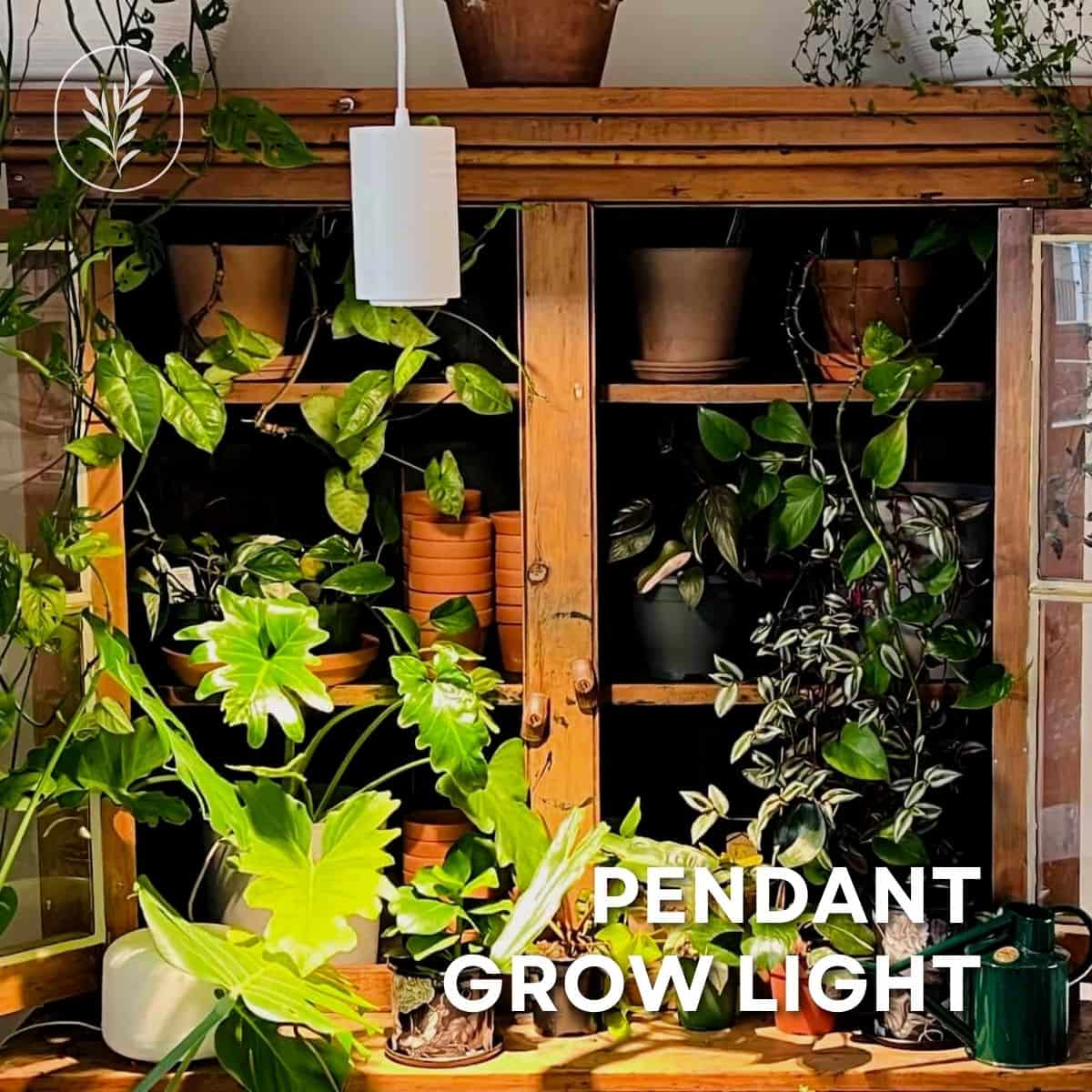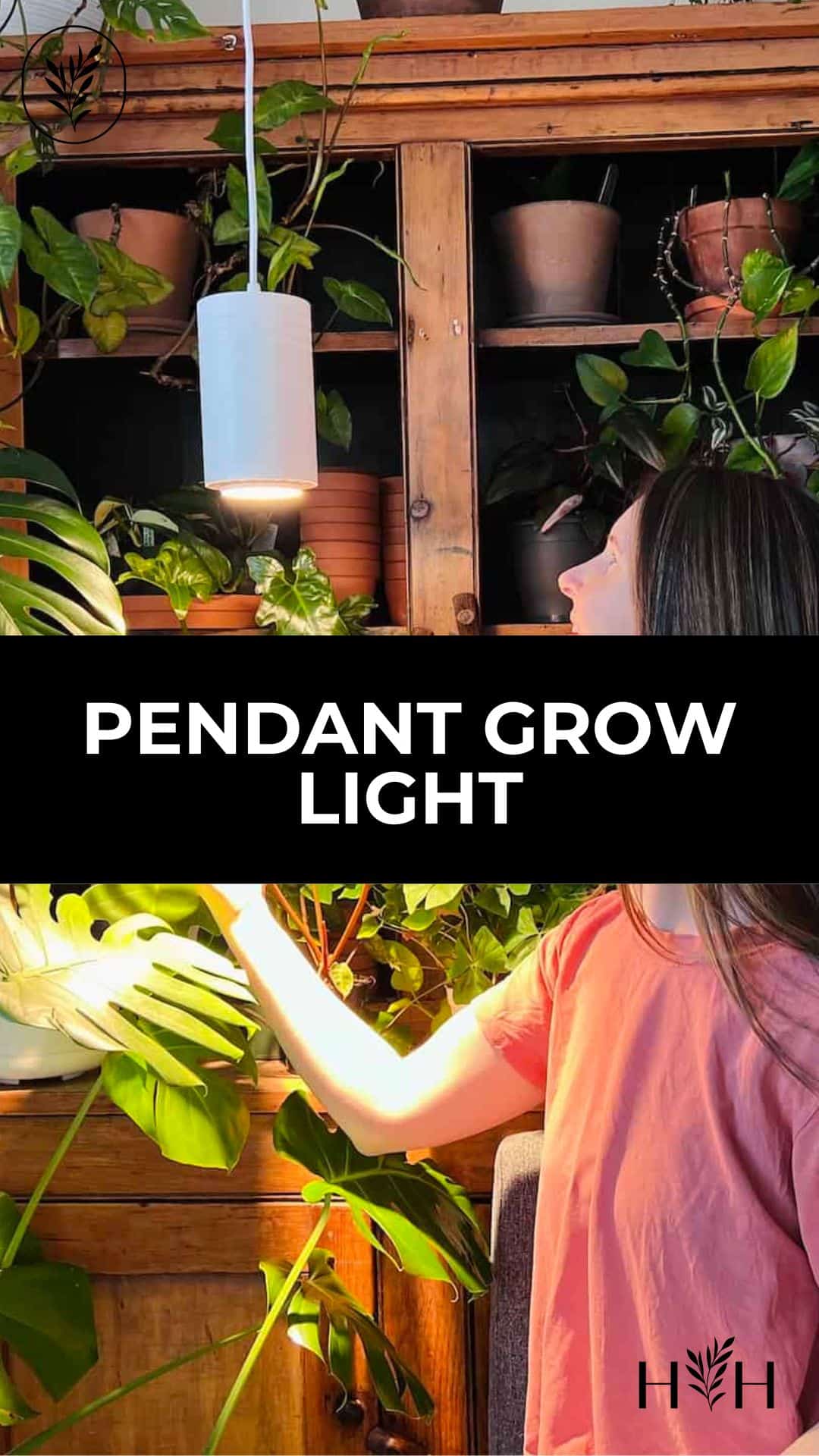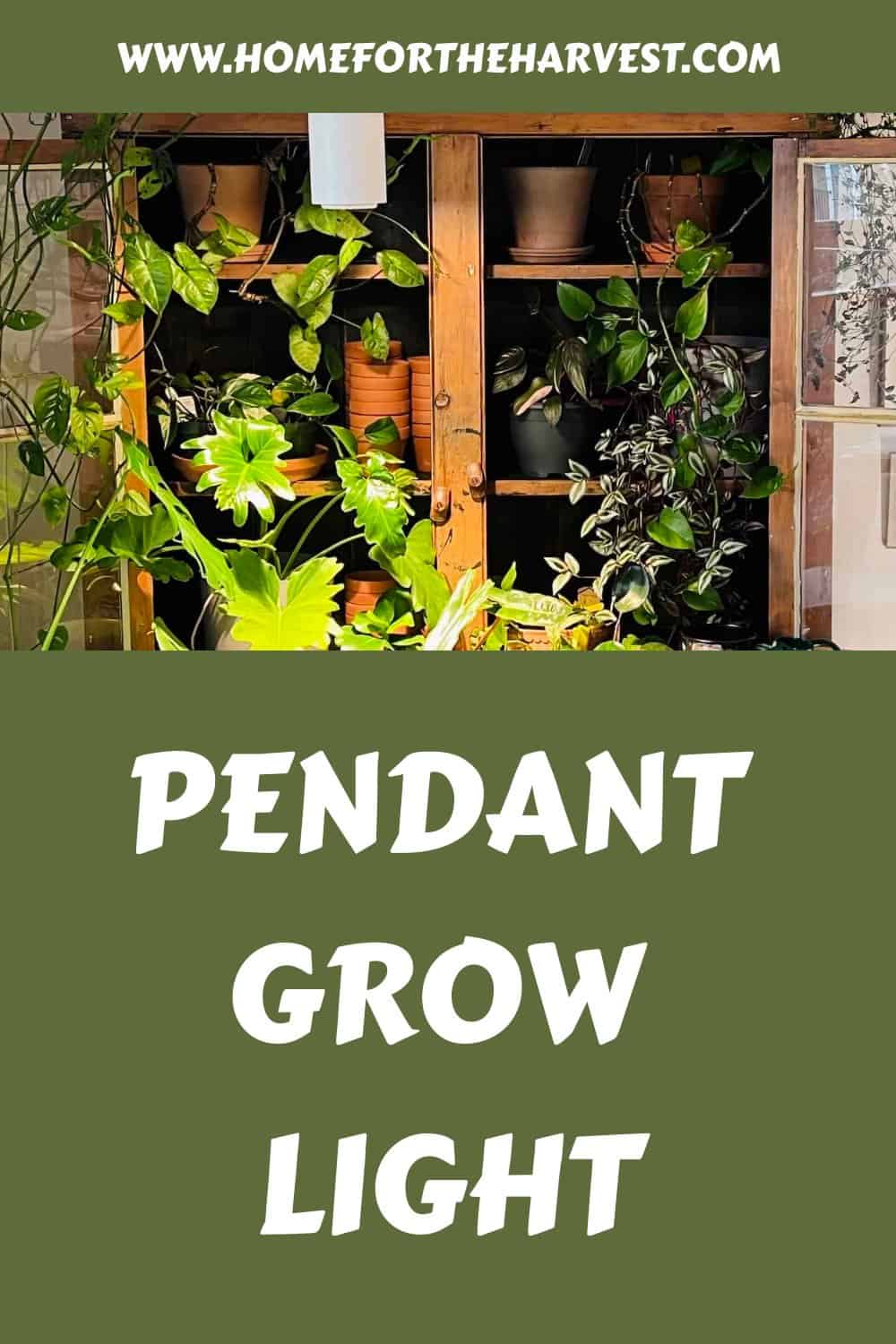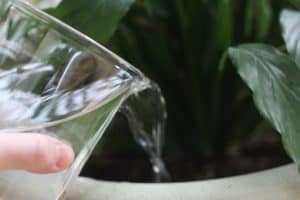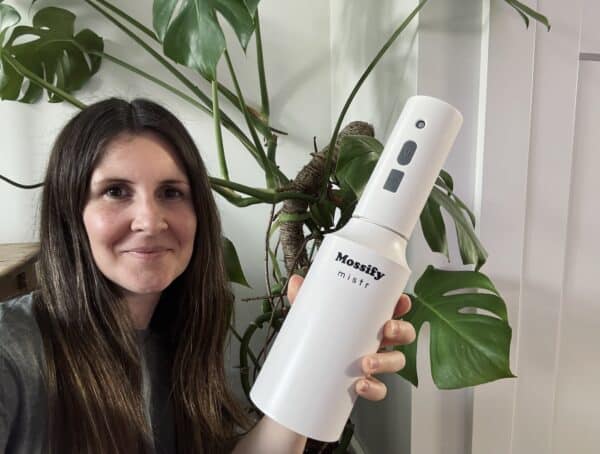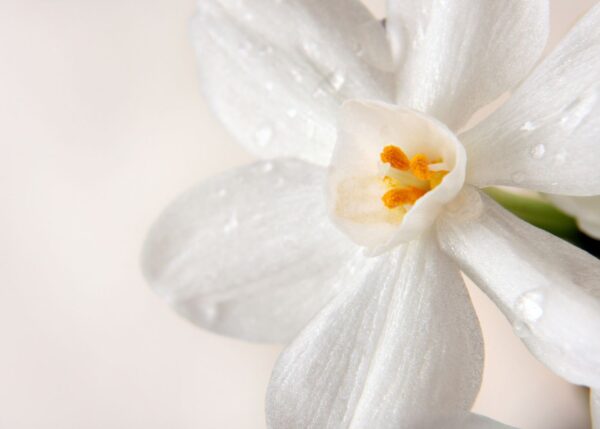Bring nature into your home without sacrificing style with a functional pendant grow light. The definitive choice for this type of fixture is the Aspect grow light by Soltech. With its easy installation process and simple lines, you can get started growing healthy plants asap!
Disclosure: This post is sponsored by Soltech Solutions, the manufacturer of the Aspect grow light.
Introduction to pendant grow lights
Pendant grow lights are an ideal way to bring natural light indoors and help your plants thrive. Your plants will receive enough light for photosynthesis without your indoor space having to accommodate an unsightly light fixture or harsh cool lighting.
Whether you’re growing houseplants, vegetables, or herbs, pendant lights designed for plants can provide the right amount of light for them to thrive. In this guide, we’ll discuss how to choose the best pendant grow light for your needs, install it correctly, position it for maximum effect, maintain it over time, and maximize its potential.
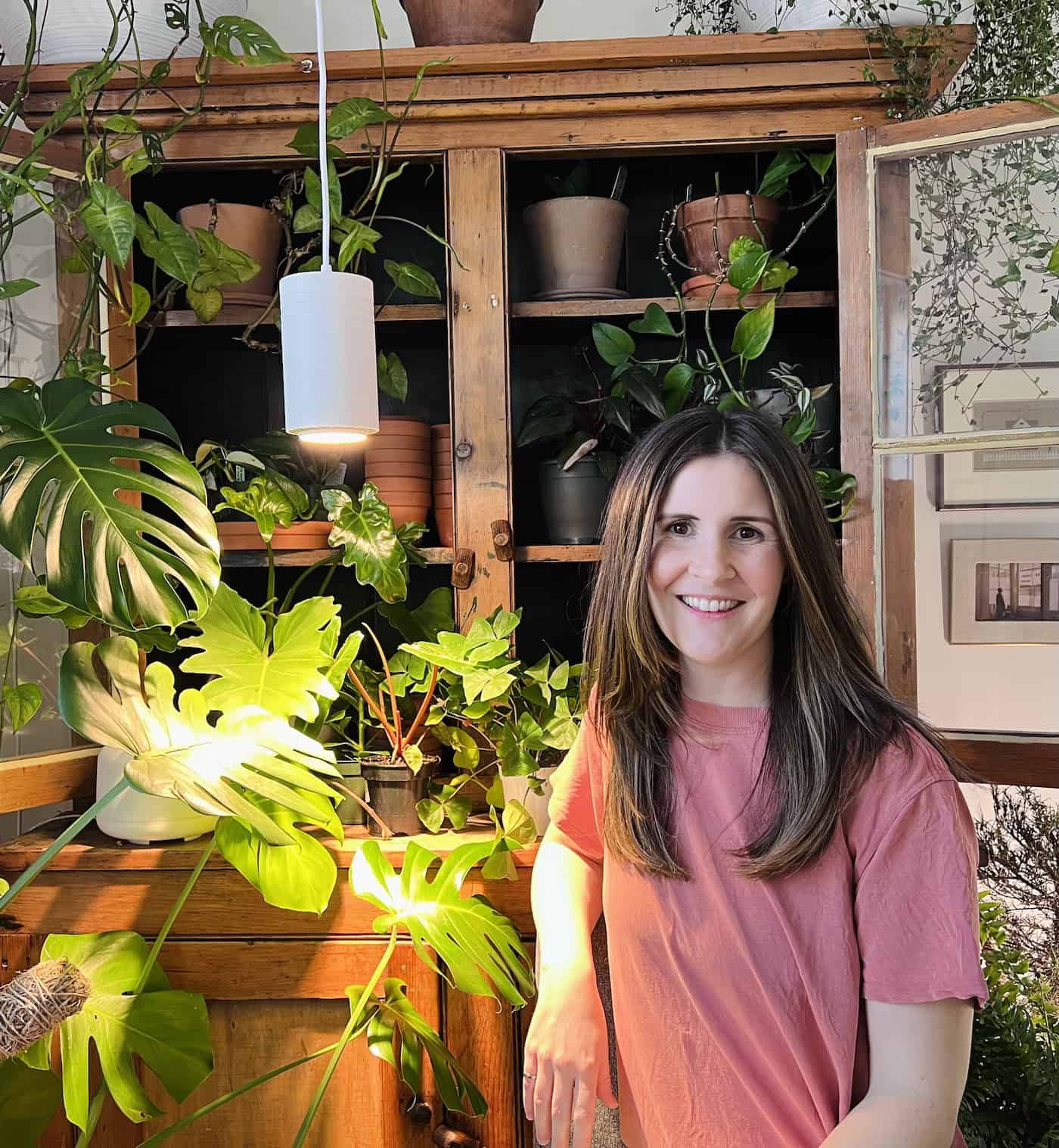
Choose the right pendant grow light
Choosing the right pendant to grow light is essential to achieving the best results with your plants. Start by considering the size and shape of your space. Pay attention to wattage ratings as well—too little power can result in lackluster growth while too much too close to foliage can cause burning or discoloration on delicate leaves. Finally, take into account how often you may need to move or adjust your lights so that they are the correct height above your plants.
Spectrum is very important when it comes to overhead plant lighting. For best results, you’ll need a color temperature that both you and your plants enjoy. In general, warm white (3000K) provides softer illumination while cool white (5000K) is brighter and better suited for larger warehouse-like areas. The cool blue-purple light of some grow lights can be quite harsh on the eyes. The Aspect pendant plant light has a color temperature of 3000K and a color rendering index (CRI) value of 97, making it best-in-class.
In terms of tech, the two most common types of pendant grow lights are LED and HID (high-intensity discharge). Compared to HID lights, LED lights generate less heat and are thus more suitable for confined areas and indoor living spaces. HID lights also consume more energy than LED ones, thus making them a pricier option in the long run.
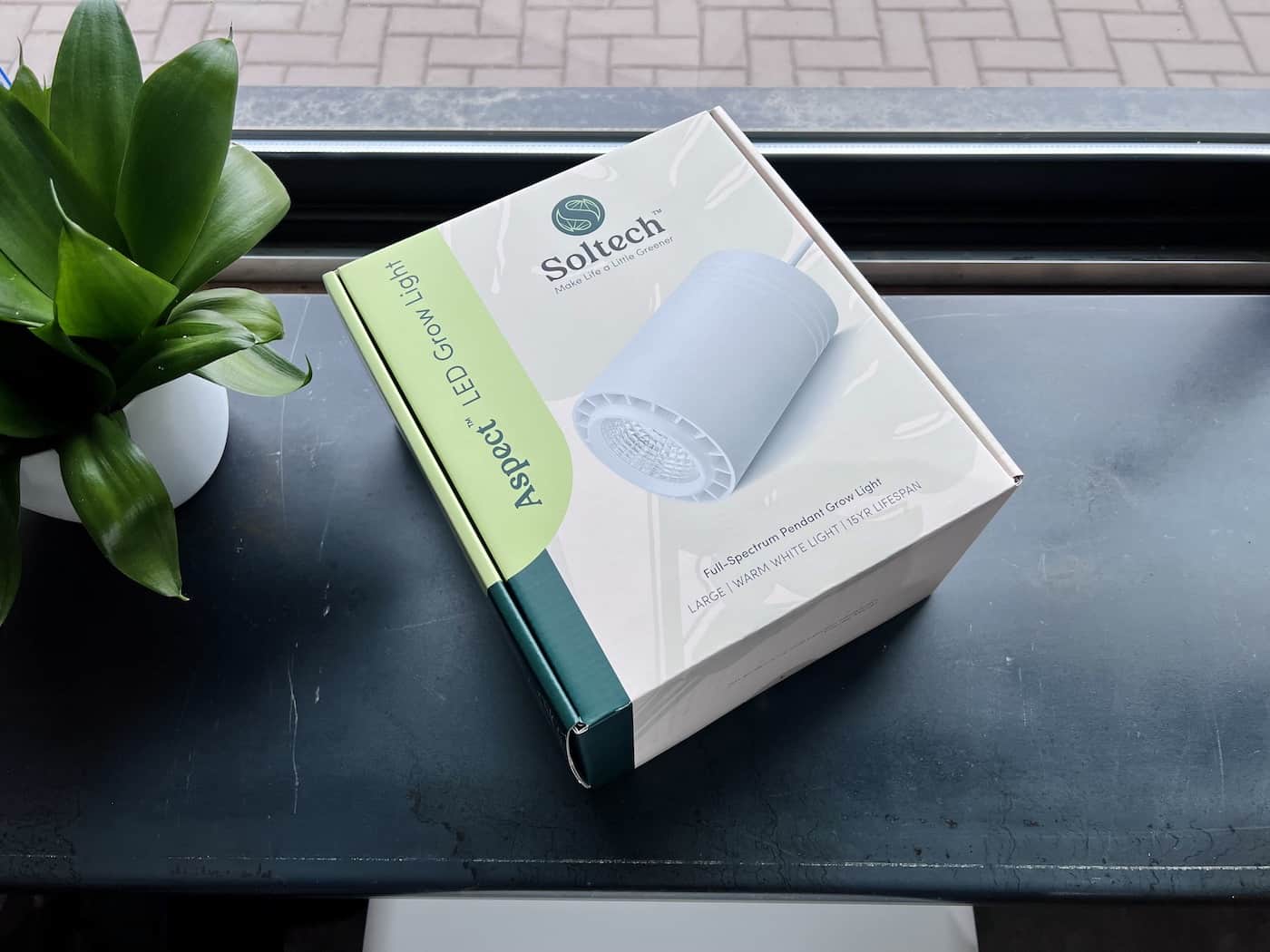
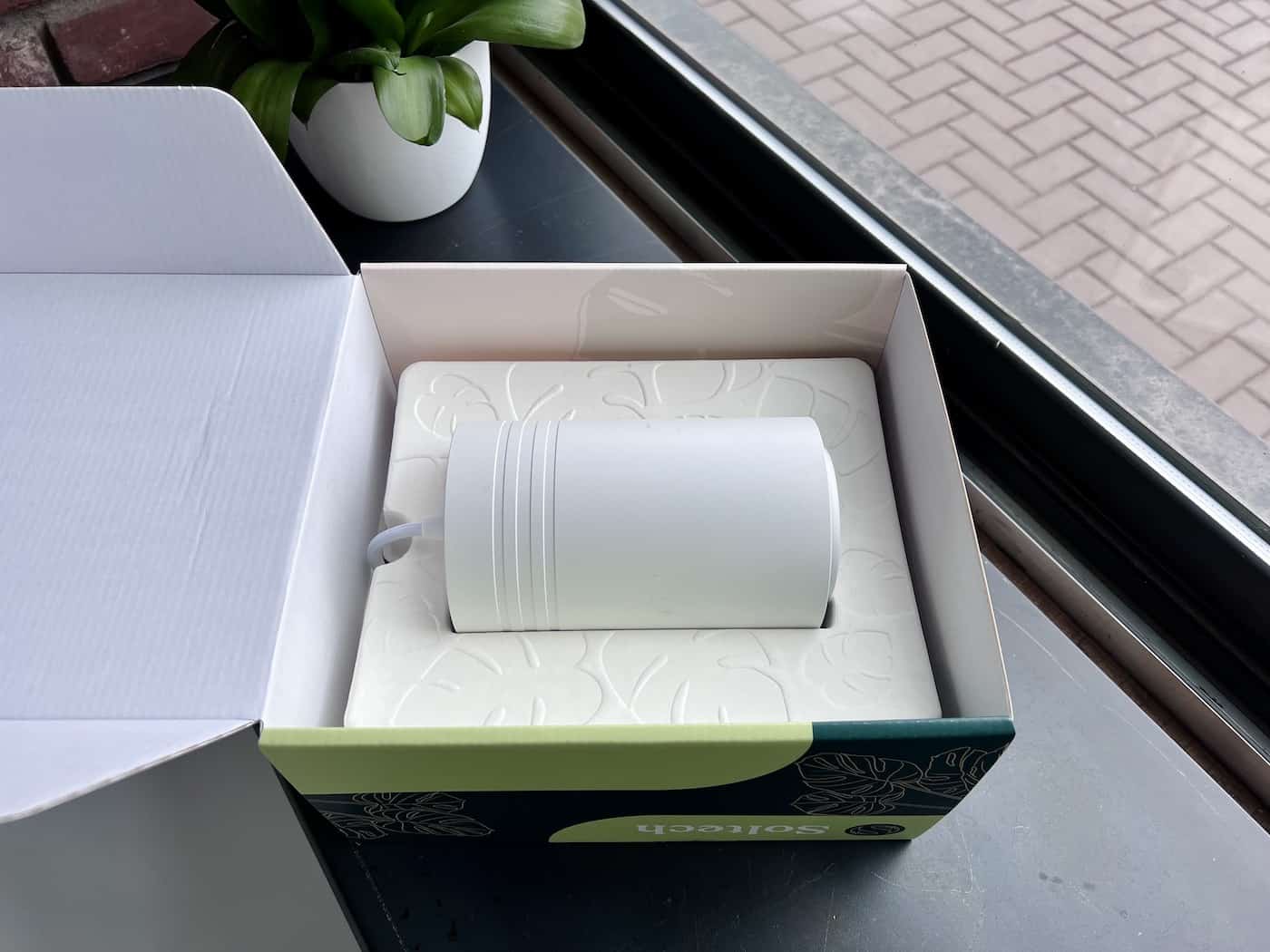
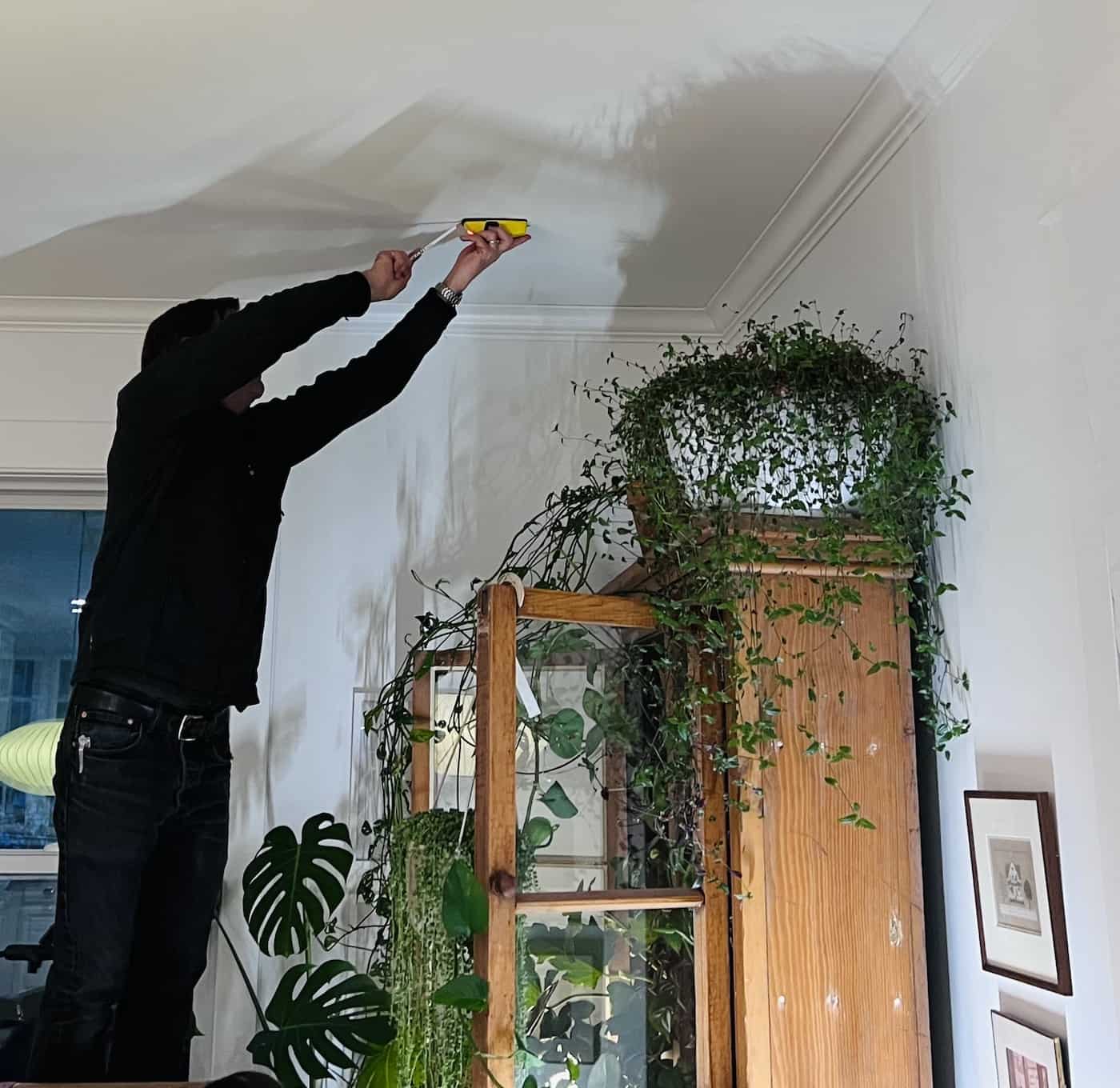
Install your pendant grow light
Installing your pendant grow light is an important step in ensuring that you get the most out of it. It’s a straightforward process that can usually be completed quite quickly.
Start by finding a suitable location for your pendant grow light. Position the pendant to hang at least six inches away from walls and other items that could block its illumination or cause a hazard. Set the fixture so it is about 2 feet above the houseplants (we will further adjust the height, later on, depending upon what plants you’re growing).
Secure the pendant grow light in a suitable location using mounting accessories, depending on what surface it needs to attach to (e.g., wood, metal). The Soltech Aspect comes with a swag hook, two fairleads, and three white hooks. I wanted the hook to go into a structural board in the ceiling, so I used my own longer/larger hook.
If necessary, use an extension cord so that you can position the unit where desired without having cords running across pathways or other areas where they might pose a tripping hazard or otherwise become damaged over time due to wear and tear from foot traffic. Fortunately, the Aspect comes with a very long cord, so I didn’t need an extension cord. Double-check all connections before powering the light up so there are no loose wires causing potential hazards.
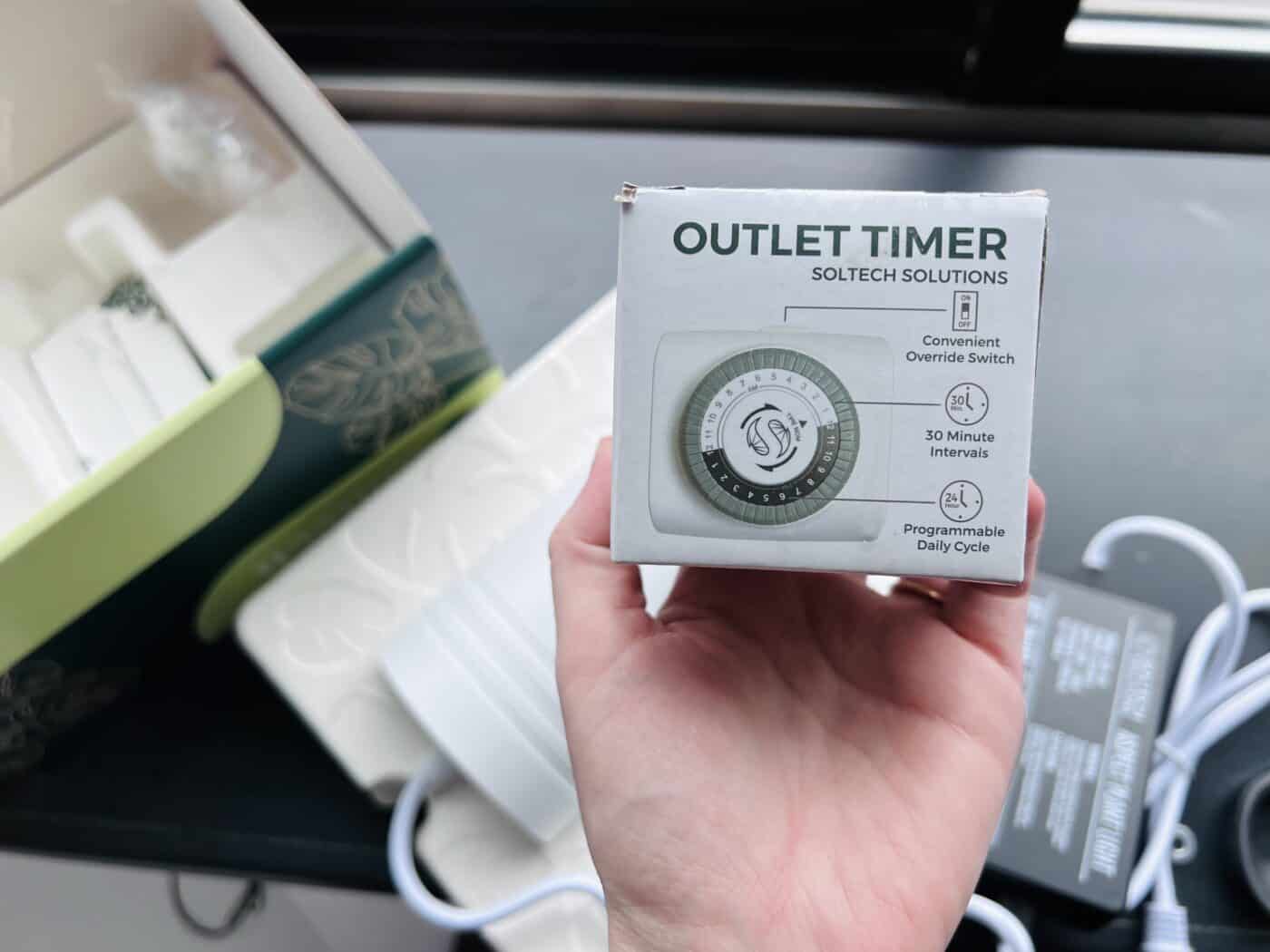
Setting the daily on/off timer
The Soltech Aspect includes a timer that can be used to turn the light on and off each day. Establish a lighting schedule that caters to the needs of your plants and fits with your day-to-day routine.
A common schedule is on for 12-16 hours during the day, and then off for 8-12 hours during the night. Experiment until you find an ideal balance between photosynthesis production rates and energy consumption goals. This light is pretty good in terms of energy efficiency, so I’ve set mine to 16 hours on and 8 hours off each day.
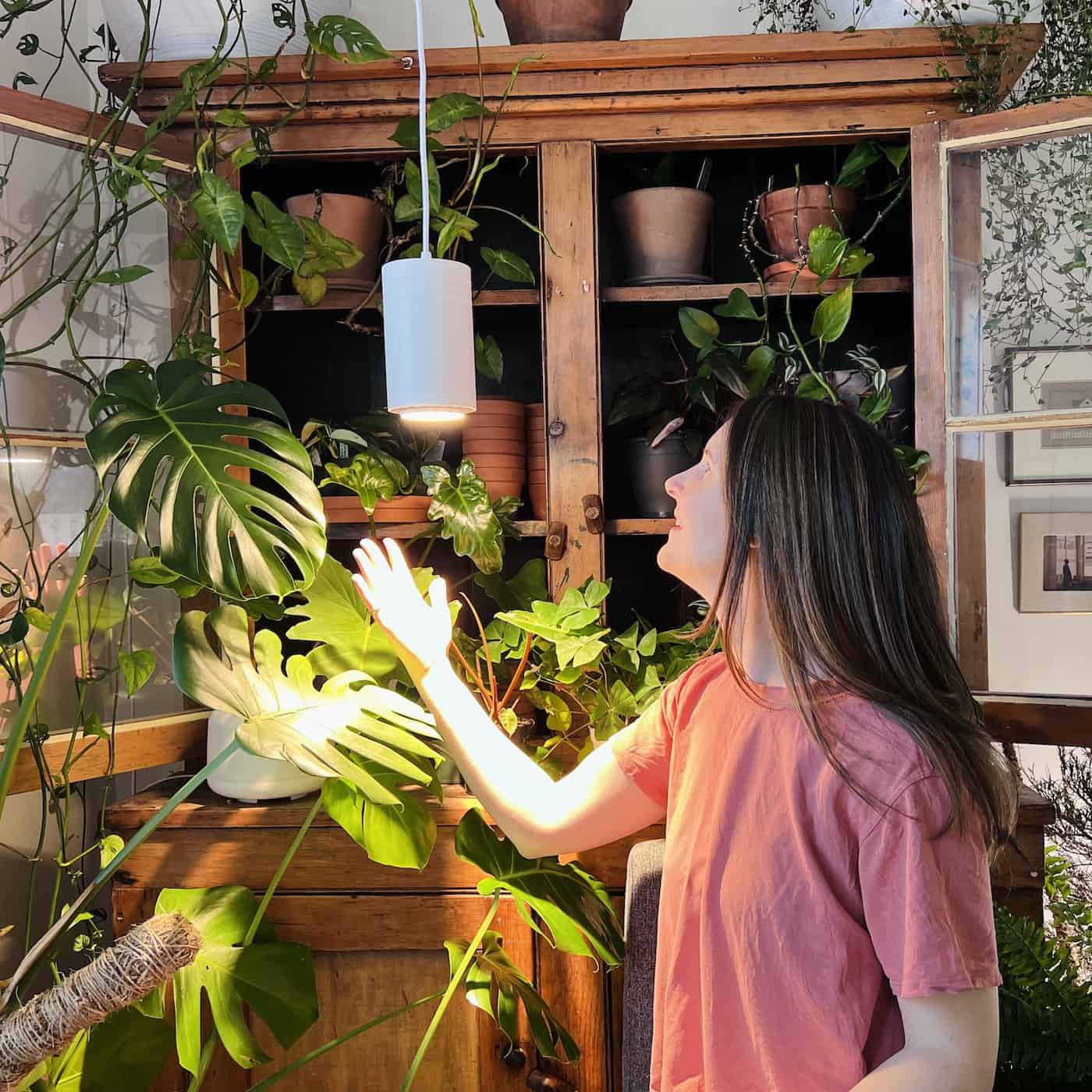
Position your pendant plant light
Positioning your pendant grow light is key to ensuring the best coverage and efficiency. The right location will depend on what you’re growing, how much space you have available, and how many plants you’re tending to.
In general, don’t hang a pendant grow light any closer than 12″ from the foliage of your houseplants. The leaves are likely accustomed to low indoor light levels and may become scorched by the sudden addition of bright light.
The height of the pendant light fixture will depend on how much light your specific plants like to receive, as well as the area you’re hoping to cover (if using your light for multiple plants). In general, the smaller 20W Aspect should be no closer than 1-2 feet from your indoor plant’s leaves, while the larger 40W aspect shouldn’t be closer than 2-3 feet from most houseplants.
Here is a detailed table showing the four different light level preferences of many popular indoor plants. Check the bottom of the table for recommended distances between the leaves and the fixture.
Table 1: Lighting preferences of popular houseplants and corresponding light distance
| Bright direct sunlight | Bright indirect light | Medium indirect light | Low light tolerant* |
|---|---|---|---|
| Citrus Cactus Aloe Echeveria Sempervivum Aeonium Haworthia Hibiscus Basil | Monstera Orchid Fig Anthurium Caladium Peace lily Schefflera String of pearls | Alocasia Fern Philodendron Calathea Begonia Dieffenbachia Tradescantia Syngonium Oxalis Peperomia | ZZ Plant Snake plant Pothos Spider plant Fern Ivy Prayer Plant Pilea Dracaena Chinese evergreen Cast iron plant Parlour palm |
| 12″ from small aspect fixture (20W) | 12″-24″ from small aspect fixture (20W) | 24″-36″ from small aspect fixture (20W) | 36″-48″ from small aspect fixture (20W) |
| 12″-24″ from large aspect fixture (40W) | 24″-36″ from large aspect fixture (40W) | 36″-48″ from large aspect fixture (40W) | 48″-60″ from large aspect fixture (40W) |
*Most houseplants prefer medium-bright indirect light. This even includes many plants that are tolerant of low light. While they tolerate a lack of light, most will grow much more quickly when bright indirect light is available, as long as it’s introduced gently and is not too close to the leaves.
Positioning your pendant light correctly is essential for ensuring optimal growth and development of the plants. To maintain its effectiveness and avoid being too close to foliage, it’s important to regularly check on how well your pendant grows light is performing and make adjustments as needed.
If you’ve got a few fixtures, hang your pendant grow lights at least ~18 inches away from each other when lighting multiple areas of a room. This can help keep one light from overpowering another. Additionally, make sure there’s adequate air circulation around each lamp to prevent overheating and potential damage to delicate foliage nearby.
Maintaining a pendant plant light
Regularly cleaning and checking on your fixture will ensure that you get the best possible results from your lighting system. Soltech pendant lights have a 15-Year expected lifespan. They also come with a 5-year warranty & 90-day money-back guarantee.
Here are some tips on how to keep your pendant grow light in top condition.
Monitor heat levels
Pendant lights can generate heat while in use which needs to be monitored carefully in order to avoid potential safety issues. Check regularly to make sure temperatures don’t exceed recommended levels; if they do then take steps immediately in order to reduce heat output before continuing operations again safely later on down the line.
Proper ventilation is essential when using a pendant grow light; not only does this help regulate temperature but it also ensures a fresh air supply reaches plants growing beneath its rays. Make sure there are no obstructions near your unit that might impede good air circulation. Always follow installation instructions for your unique unit.
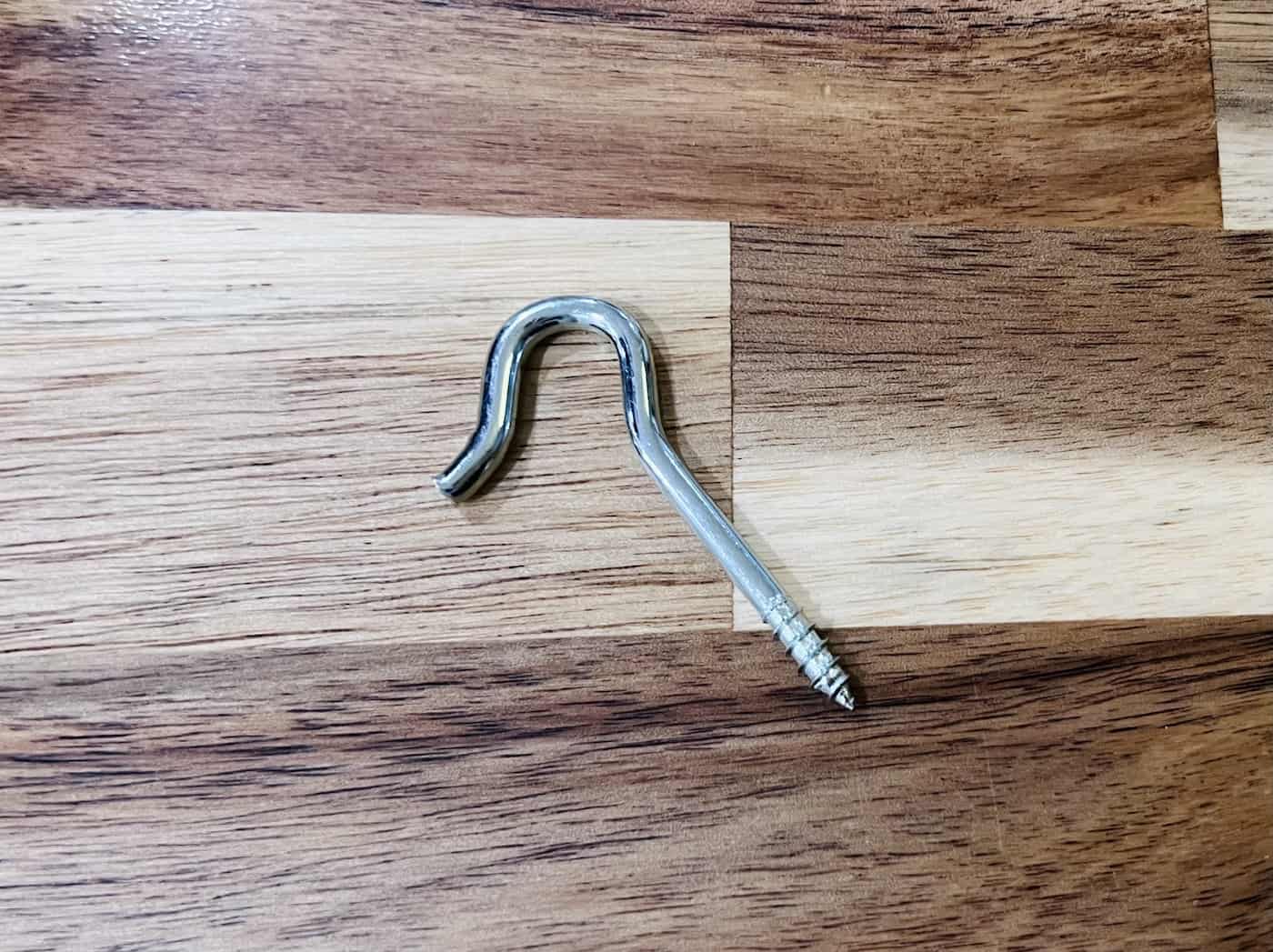
Check cables and connectors
Make sure all cables and connectors are firmly attached and secure when setting up your lighting system; loose connections can lead to fire hazards if left unchecked. Periodically examine connections for any signs of deterioration or other harm to ensure timely repairs if necessary.
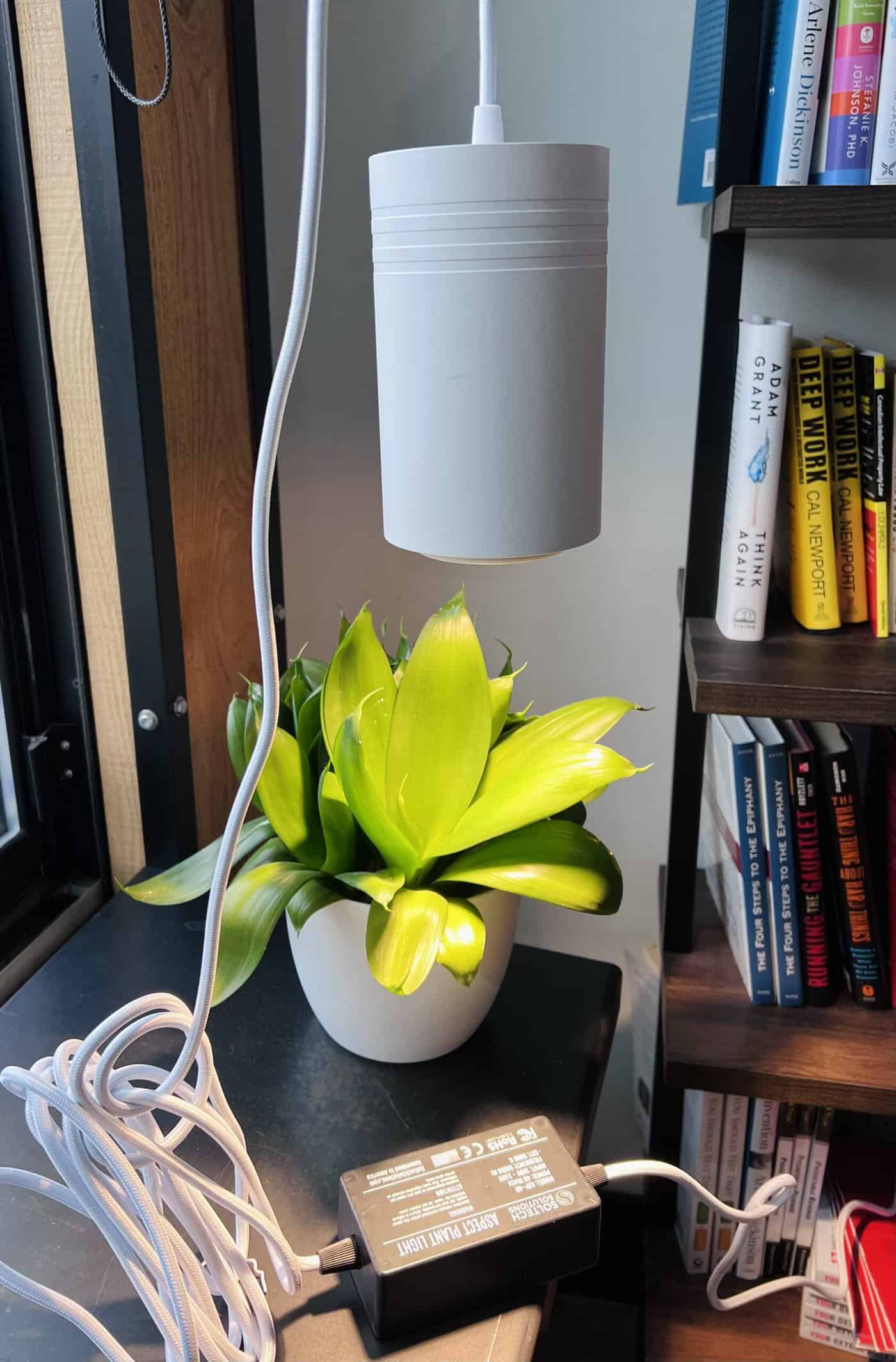
Clean the fixture regularly
Dust, dirt, and debris can accumulate on the surface of a pendant and grow light over time. To keep it running optimally and looking great, make sure you clean off any build-up with a damp cloth or sponge every few weeks. This may also help prevent damage caused by overheating due to dust blocking the airflow around the unit.
Replace parts if needed
While high-quality grow lights are built to last, certain components may need to be replaced for optimal performance. Make sure you check regularly for signs of wear and tear, such as frayed wires or cracked plastic housing pieces, so that they can be swapped out before any further damage occurs.
By following the steps outlined in this article, you can ensure that your pendant grows light and is properly maintained and running at its peak performance. Now let’s explore how to maximize your pendant grow light’s potential for success.
Maximize your light’s potential
Once you’ve installed and positioned your pendant to grow light, there are a few simple tips and tricks that can help maximize its potential.
For starters, make sure to keep the temperature of the room in which your plants are growing consistent (this means avoiding drastic fluctuations in temperature). Most houseplants are happy at room temperature (and humidity), which is comfortable for humans. Too much heat or cold can stress out your plants and lead to poor growth or even the death of more sensitive houseplants.
It’s also important to give your plants enough water. Pendant lights can generate heat, so it’s essential to ensure that soil for most plants is always a bit moist (but not soggy, as this could cause root rot). To avoid overwatering, use a moisture meter to monitor the level of hydration in the soil and adjust watering accordingly.
You should also be mindful of how high the pendant light is over top of plants as they grow taller. Being too close may burn them while being too far away won’t provide adequate lighting for photosynthesis – both will have an adverse effect on plant health. Use the table in the above section for a good height distance away from the leaves (usually 2-3 feet). Re-evaluate the distance between the foliage and light as your plants grow to avoid foliage burn.
Lastly, consider adding reflective surfaces around your pendant grow light, such as aluminum foil or mylar film, which will help reflect more light onto the leaves below – allowing for better coverage across all areas without having to increase wattage output from each fixture itself. This is especially useful if you want uniform illumination without needing multiple units at different heights above ground level – potentially saving time & money.
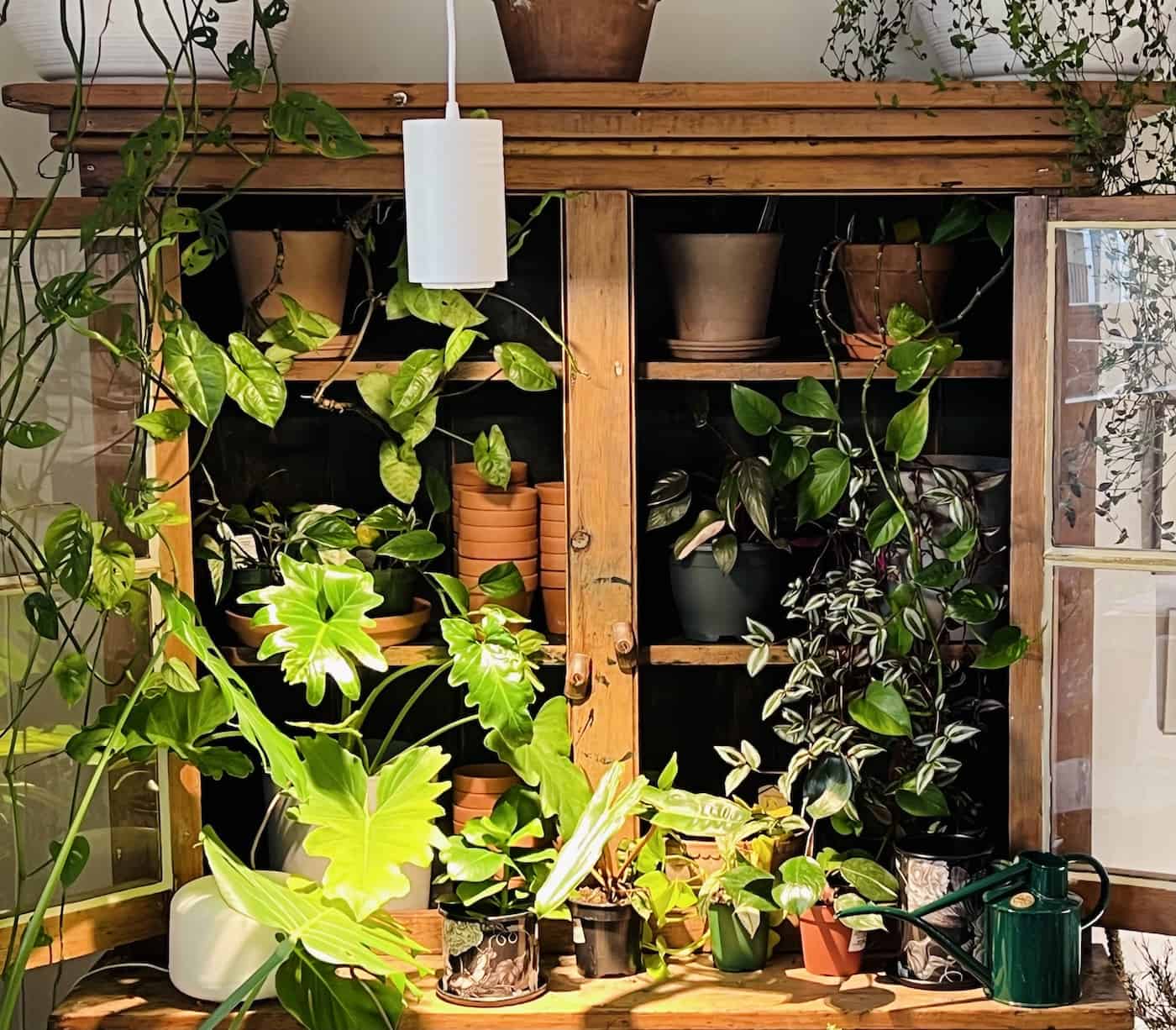
FAQs about pendant grow lights for indoor plants
Can any LED light be used as a grow light?
While any LED light could theoretically be used as a grow light, there is a wide range of effectiveness. Grow lights are specifically designed to provide the correct spectrum of light and intensity for plants to thrive. If you have an existing light you’d like to try, you can test it out if you like, but generally, purpose-built plant lights end up being more effective (as long as you follow the installation instructions).
What is the best type of light for growing plants indoors?
The best type of light for growing plants indoors is usually full-spectrum LED lighting. This type of lighting supplies a blend of red, blue, and green wavelengths which are fundamental for photosynthesis and strong plant growth. LEDs offer an energy-efficient and heat-reducing choice for interior horticulture, making them a great pick. With the right setup, you can easily create the perfect environment to help your plants thrive.
How many watts should a grow light be for indoor plants?
The wattage for a grow light needed to cultivate indoor vegetation will fluctuate depending on the kind and size of the plant being grown. LEDs are typically more economical than other types of lighting, allowing for use at reduced wattage. For small houseplants, you should use between 15-30 watts per square foot can work well. For larger plants accustomed to full sunlight outdoors, you may need up to 40-50 watts per square foot.
What is the most effective light for plant growth?
The most effective light for plant growth is sunlight! But indoors, full-spectrum LED lighting is a good substitute. This type of lighting provides the ideal balance between wavelengths, intensity, and duration to ensure optimal photosynthesis. LEDs are energy efficient, have a long lifespan, and can be tailored to provide specific spectrums for different plants. They also produce very little heat compared to other types of lights which makes them safe for use in enclosed spaces or greenhouses.


